12-15 minutes
In the following interviews, the early history and evolution of the Narmada struggle against the Sardar Sarovar Project (SSP) has been described by twelve senior people involved in the struggle. Their names, along with a brief introduction and the links to their narrations are given below. The list is followed by a summary of the broad sequence of events from 1961 till the formation of the Narmada Bachao Andolan (NBA) in the eighties. The summary of the early history in text format is available here.
The list of people with links to their narrations is given below.
The Late Mulji (bhai) Tadvi
Village Kevadia, Kevadia Colony, Gujarat
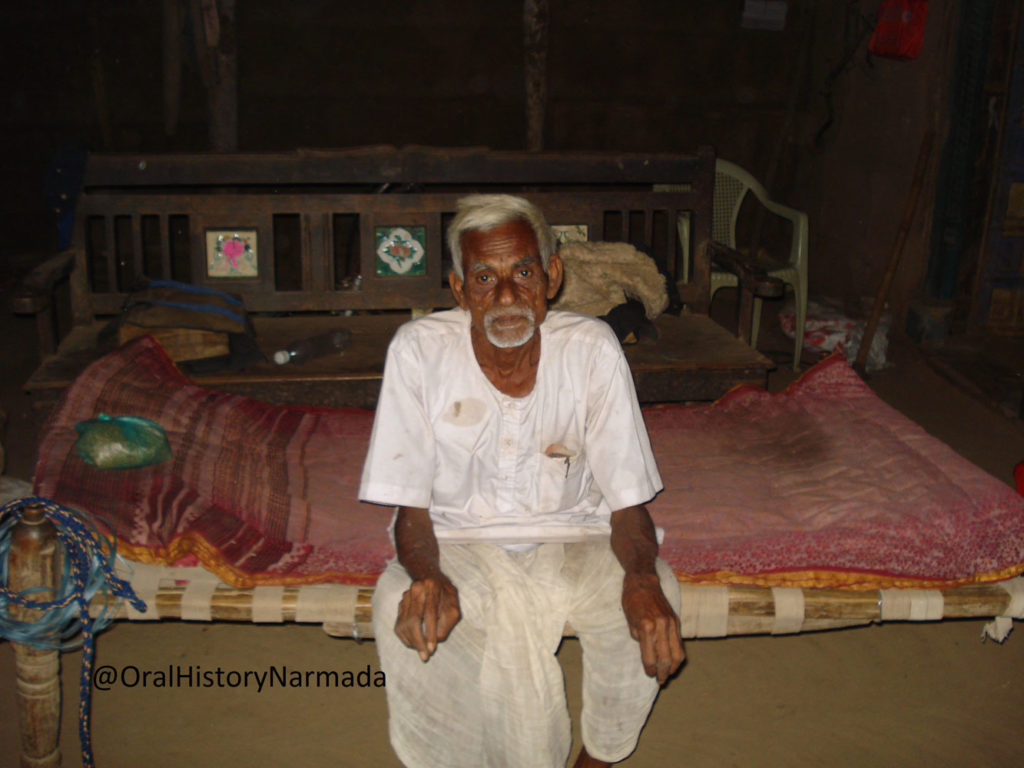
Muljibhai witnessed the laying of the foundation stone of the Navagam Dam (later to become the Sardar Sarovar dam) by Prime Minister Jawaharlal Nehru in 1961, at Navagam village, Gujarat. He talks about the acquisition of adivasi lands from six villages in 1961 for the Sardar Sarovar project colony (named Kevadia Colony); the resistance offered at that time; and covers the many issues concerning the displacement of the adivasi community for the construction of Kevadia Colony (earlier the Sardar Sarovar Project colony). Importantly, even today, as this is being written, in 2021, the people affected by Kevadia Colony continue to fight for justice as they have never been considered project affected people and never rehabilitated.
After the completion of the dam, the government has constructed the world’s tallest statue and tourism related infrastructure on these very lands at Kevadia Colony. Subsequently, the Government has changed the name of Kevadia colony and it has now been renamed Ekta Nagar, severing even its nominal connection with the adivasi (tribal) villages it has destroyed. This interview will continue to remind us how the Kevadia colony that today boasts of housing the tallest statue and one of the biggest dams in the world has been built by depriving hundreds of adivasi families of their fundamental rights and dignity. By describing the condition of the scheduled tribe communities whose lands were acquired for the SSP, it shows us the underbelly of the ‘Gujarat Model’ of development in which SSP holds such a central position and which the rest of the country is now trying to emulate.
About the magnitude of their struggle, one can rightly quote Rahul Banerjee, a senior activist and a writer who wrote, “The people of Kevadia were possibly the bravest of all those who fought against the SSP.”
For the history of how adivasi/ tribal community of six villages, namely Gora, Waghadia, Kevadia, Kothi, Navagam and Limdi have been deprived of their lands and livelihood for the construction of Kevadia colony, now named Ekta Nagar, do also listen to the interviews of Dalsukhbhai Tadvi, Kapilaben Tadvi, Narsinghbhai and Soniben Tadvi. Also listen to Prabhubhai Tadvi who talks of how their lands and villages were, before the coming of the Sardar Sarovar Dam and before their lands were acquired for the project colony. These oral histories have been shared on this website.
Interview Duration: 00:34:24
Language: Audio in Gujarati, Subtitles in English
The Late Dalsukh (bhai) Tadvi
Village Gora, Kevadia Colony, Gujarat
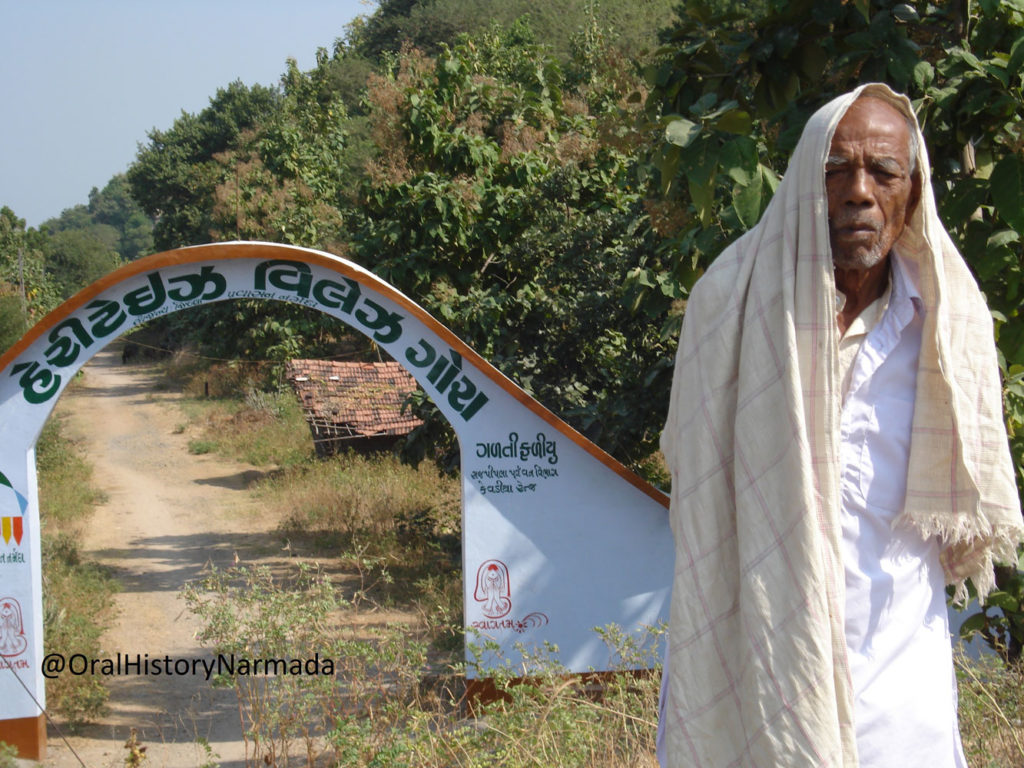
Dalsukhbhai was a young man in 1961 when the foundation stone of the Navagam Dam (later the Sardar Sarovar dam) was laid by Prime Minister Jawaharlal Nehru. He talks about the struggle of the people of six adivasi/tribal villages affected by Kevadia Colony (the Sardar Sarovar Project Colony), from back then till the formation of the Narmada Bachao Andolan. Kevadia Colony is built on the lands of the adivasi community, acquired for the Sardar Sarovar Project, and is famous today for the tallest statue in the world, the Statue of Unity. The people affected by Kevadia Colony continue to fight for justice even today as they were never considered project affected people and never rehabilitated.
For the history of how adivasi/ tribal community of six villages, namely Gora, Waghadia, Kevadia, Kothi, Navagam and Limdi have been deprived of their lands and livelihood for the construction of Kevadia colony, now named Ekta Nagar, do also listen to the interviews of Muljibhai Tadvi, Kapilaben Tadvi, Narsinghbhai and Soniben Tadvi. Also listen to Prabhubhai Tadvi who talks of how their lands and villages were, before the coming of the Sardar Sarovar Dam and before their lands were acquired for the project colony. These oral histories have been shared on this website.
Interview duration: OO:15:00
Language: Audio in Gujarati, Subtitles in English
Parasmal (ji) Karnavat
Submergence village Nisarpur, Madhya Pradesh (M.P.)
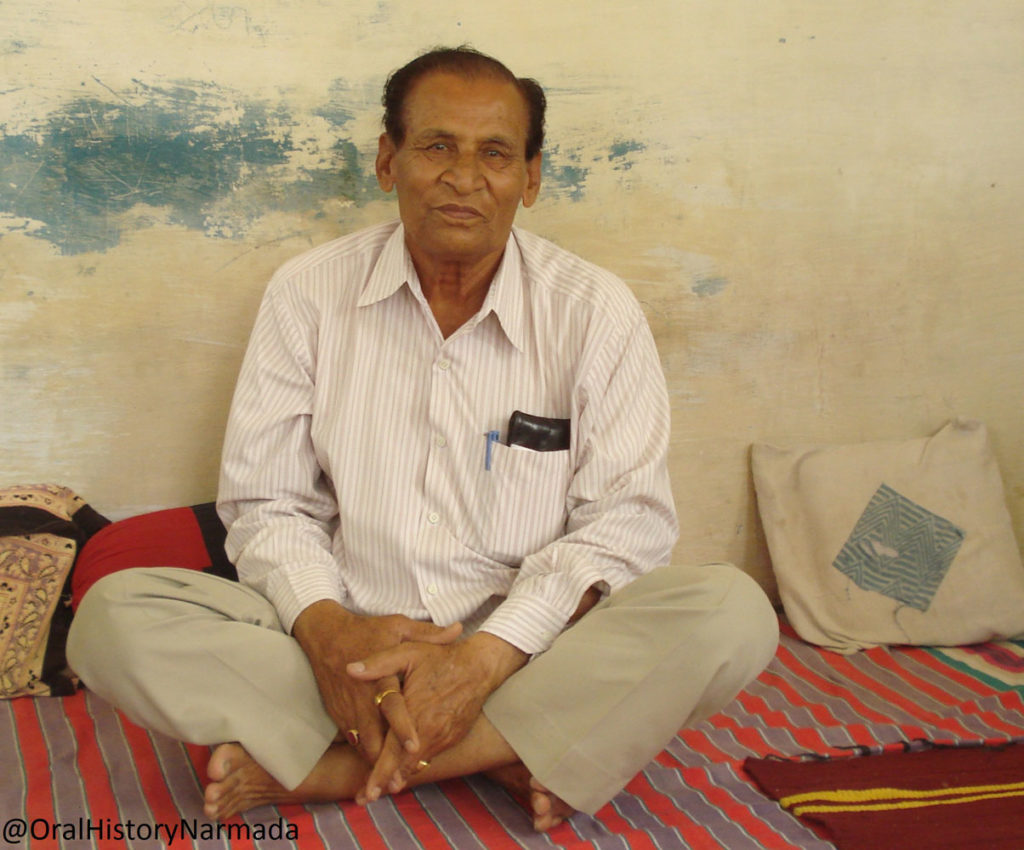
Parasmalji was a founder member the Nimad Bachao Andolan, and was at the forefront of this struggle which emerged in the Nimad region of M.P. after the declaration of Narmada Water Dispute Tribunal (NWDT) award in 1979. He describes the rise and fall of this powerful movement from his vantage point as a leading member of the Nimad Bachao Andolan as well as the founder member of Narmada Ghati Nav Nirman Samiti.
Interview duration: 1:22:11
Language: Audio in Hindi, Subtitles in English
The Late Prabhakar (ji) Madlik
Narmada Ghati Navnirman Samiti, Indore, Madhya Pradesh (M.P.)
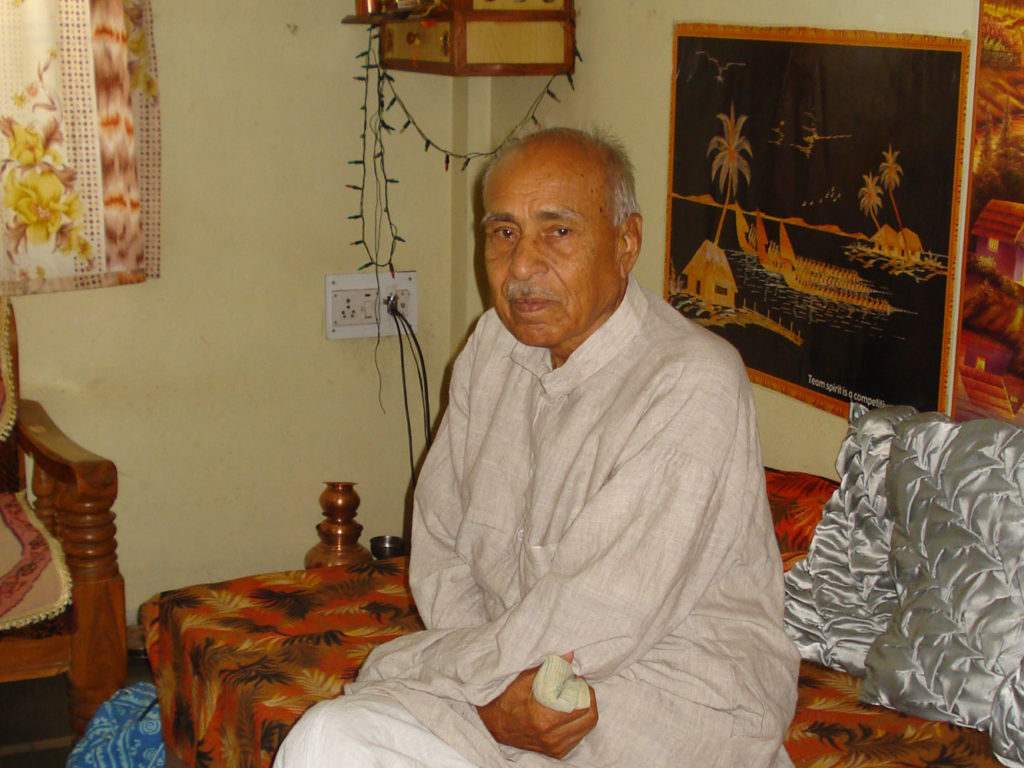
Prabhakarji, a senior Gandhian was also a founding member of Narmada Ghati Navnirman Samiti (NGNS) in M.P. He talks in detail about the formation and work of NGNS in the late 1970s and early and mid-1980s, the role it played in challenging the high dams on the river Narmada and the role of the senior members of the NGNS at that time. The work of NGNS in questioning mega dams in the early 1980s can be considered pioneering work and this interview is important to know this history.
Interview duration: 0:32:12
Language: Audio in Hindi, Subtitles in English
Kashiram (Kaka) Maru
Badwani, Madhya Pradesh (M.P.)

Kashiramkaka is a farmer from the village Ekalra in Nimad, M.P., affected by the submergence of Sardar Sarovar Project. He was at the forefront of the Nimad Bachao Andolan. His narration helps us understand the emergence and history of the Nimad Bachao Andolan in late 1970s, that questioned the height of the Sardar Sarovar Dam and demanded height reduction of the mega dam soon after the declaration of the Narmada Water Dispute Tribunal (NWDT) award in 1979. Kashiramkaka talks of the significant political events around the declaration of NWDT award and the Nimad Bachao Andolan in Madhya Pradesh that followed and he talks in great detail the role played by the Congress and and the Janta Party at that time.
Interview duration: 00:30:45
Language: Audio in Hindi, Subtitles in English
Anil (bhai) Trivedi
Senior Advocate, Indore, Madhya Pradesh (M.P.)
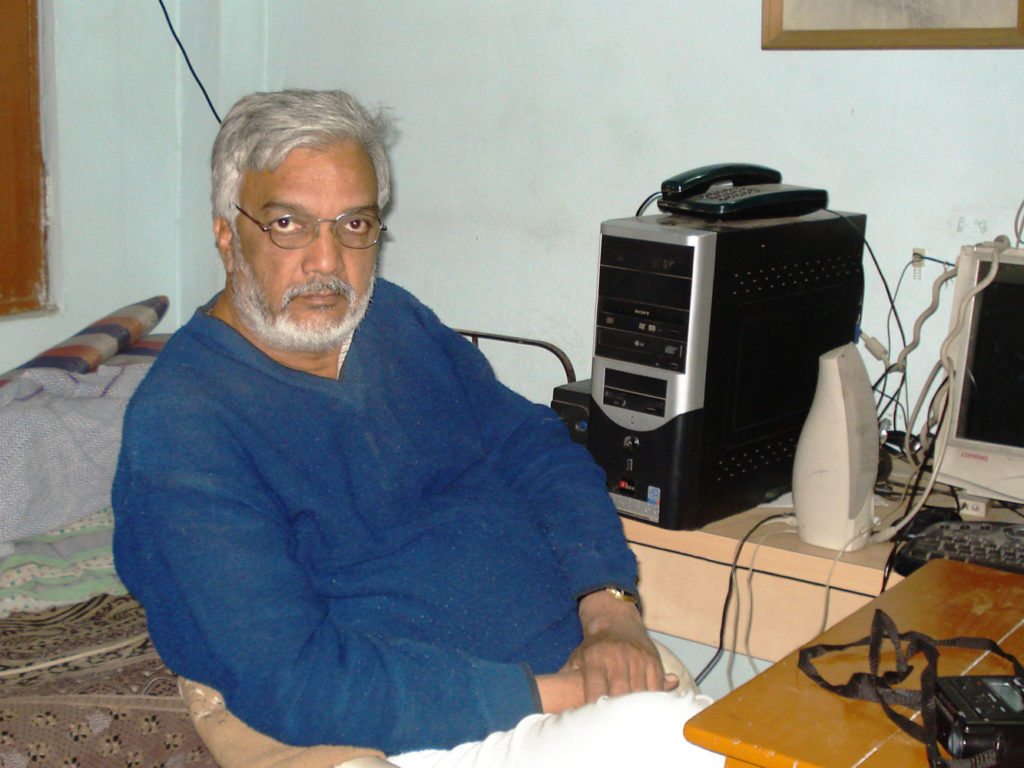
Anil Trivedi, popularly known as Anilbhai has been a social and political activist, associated with many movements and campaigns in M.P., and is a part of the support group for the Narmada Bachao Andolan. Anilbhai’s father , the Late Kashinathji Trivedi was a prominent Gandhian and a freedom fighter and one of the founding members of Narmada Ghati Navnirman Samiti. Anilbhai talks of the early politics in M.P., and issue of dams, the Nimad Bachao Andolan and the Narmada Ghati Navnirman Samiti and the history of these organisations in questioning the mega Sardar Sarovar Project/Dam. He throws light on the political scenario at the time of the declaration of the Narmada Water Dispute Tribunal award in 1979, the role played by different political parties and leaders and the history of resistance that followed in Madhya Pradesh.
Interview duration: 1:27:41
Language: Audio in Hindi, Subtitles in English
Ashish Kothari
Kalpavriksh Environment Action Group, Pune, Maharashtra
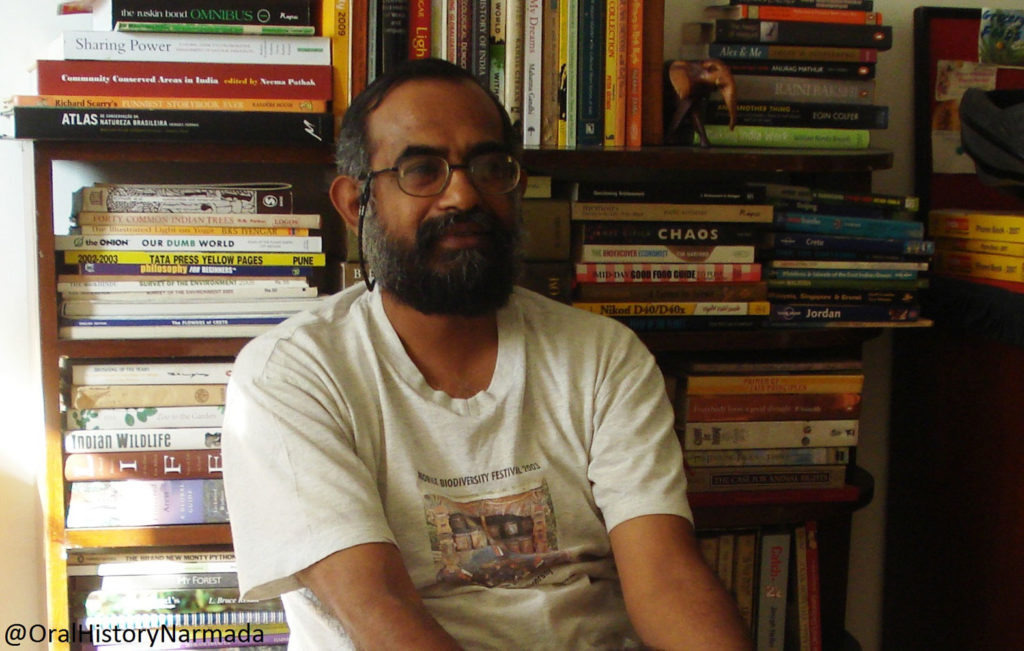
Ashish Kothari is one of the leading environmentalists of the country. He led a team on a walk along the Narmada River in the early 1980s on the issue of dams in the basin. He helps us understand the emergence of the environmental issues around the Narmada dams in the early 1980s, he was one of the persons who played an important role at that time in the emergence of the Narmada Bachao Andolan.
Interview duration: 0:50:59
Language: Audio in English, Subtitles in Hindi
The Late Dr. Vasudha Dhagamwar
Multiple Action Research Group (MARG), New Delhi
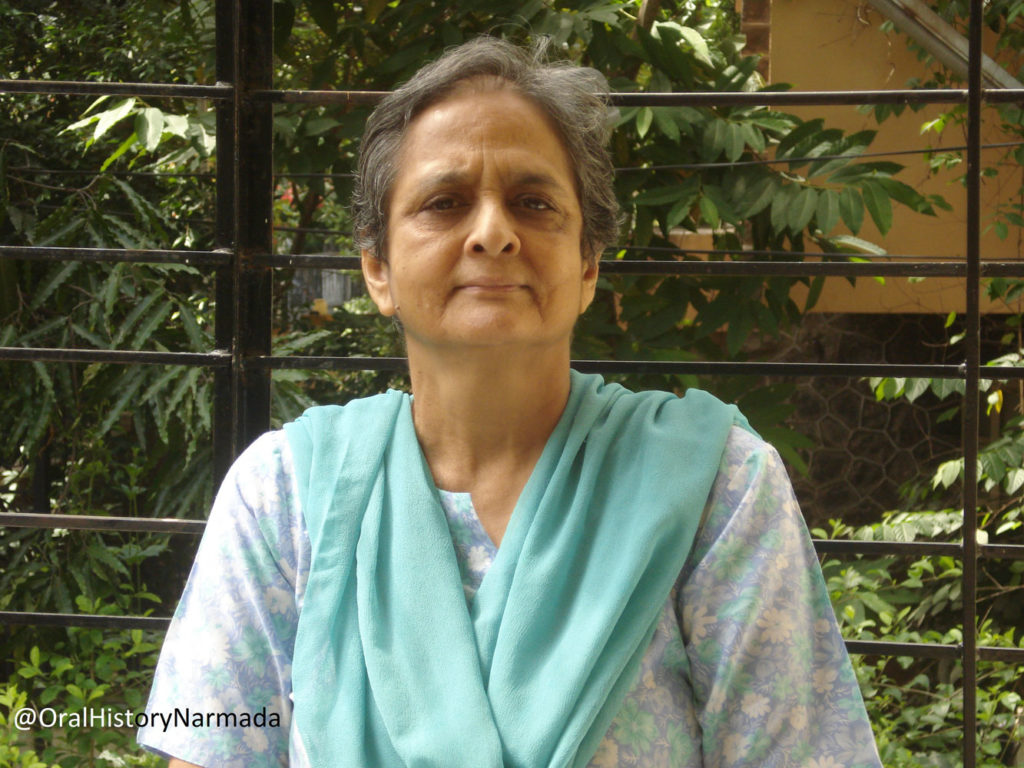
Late Dr. Vasudha Dhagamwar, a lawyer, scholar, researcher, writer and an activist was one of the earliest from outside the valley to visit and work in the interior adivasi belt of Akrani and Akalkuva in Maharashtra in the late 1970s and 80s on issues of land rights and displacement by Sardar Sarovar Project. She talks of the area and the people to be affected by the SSP in the early eighties, and describes her role, the role of MARG and other organisations active in the area at that time.
Interview duration: 1:08:50
Language: Audio in English, Subtitles in Hindi
Ashok (bhai) Shrimali
Centre for Social Knowledge and Action (SETU), Ahmedabad, Gujarat
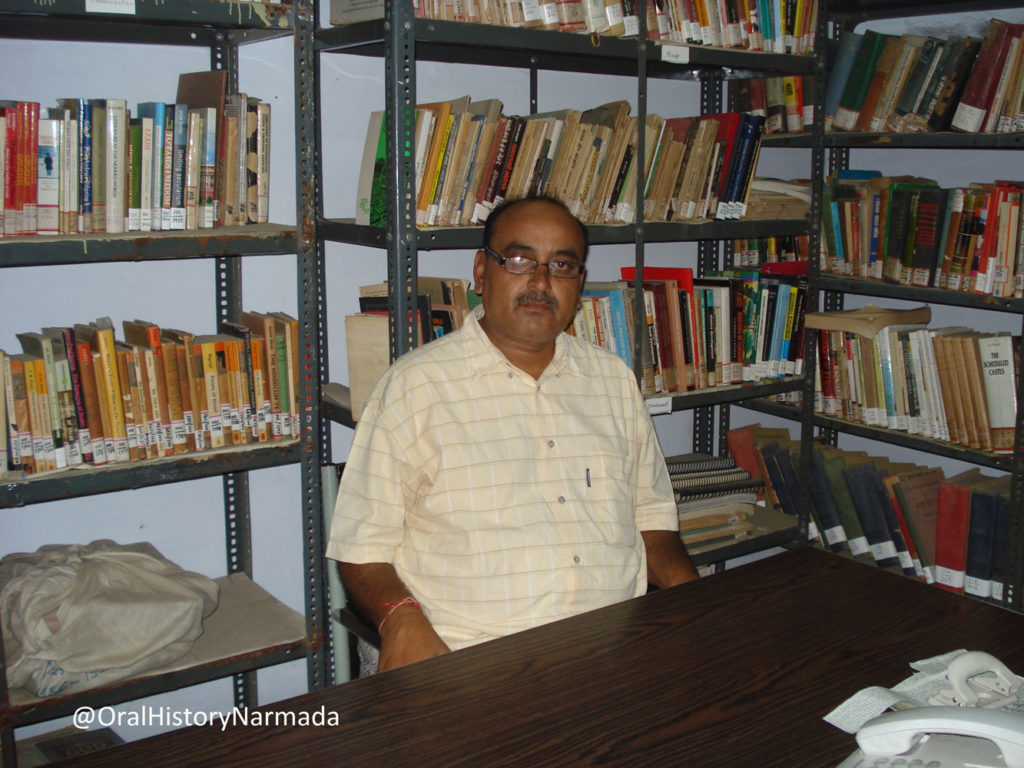
Ashokbhai is a senior member of SETU, a leading social-political activist from Gujarat and is also the general secretary of Mines, Minerals & People. He talks about SETU’s role in the formation of the Narmada Dharangrasth Samiti (NDS) in the submergence villages of Maharashtra in the mid-1980s and in taking the issue of displacement by the Sardar Sarovar Project from local to international level.
Interview duration: 1:17:00
Language: Audio in Gujarati, Subtitles in English
Rahul Banerjee
Khedut Mazdoor Chetna Sangathan (KMCS), Indore, Madhya Pradesh (M.P.)
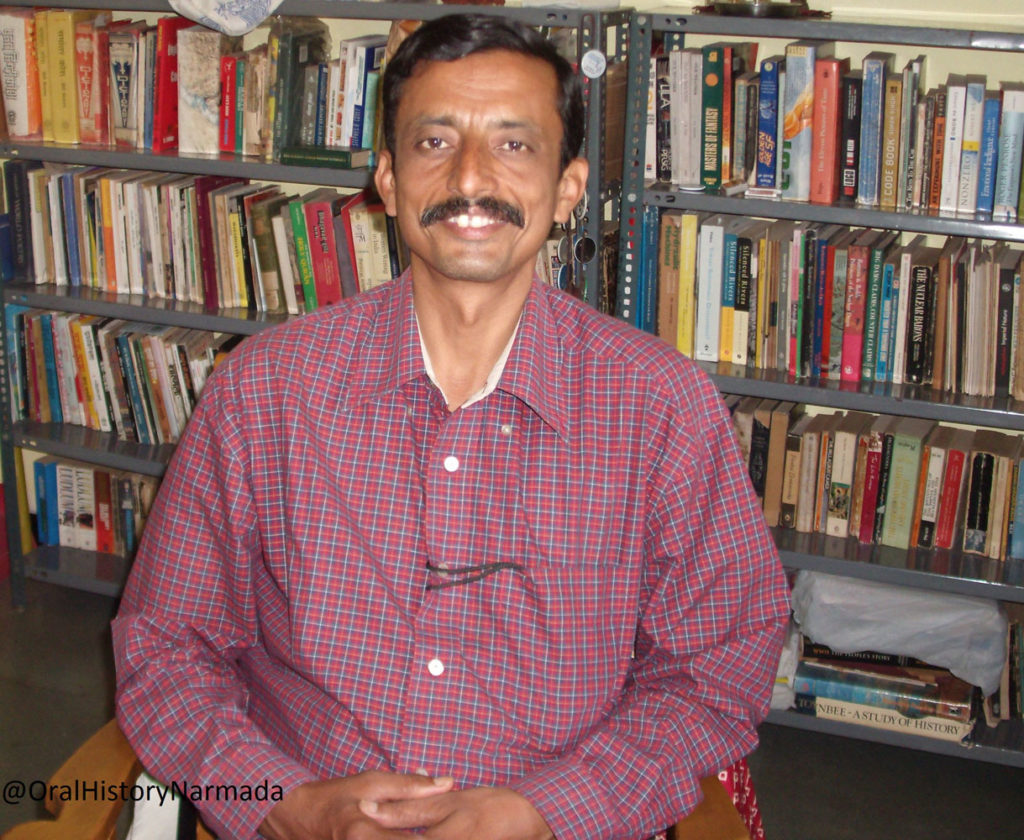
Rahul Banerjee, an engineer from IIT Kharagpur, a senior activist and a writer, explains in his interview how the KMCS was formed in the early eighties to work in the scheduled tribe areas of Alirajpur in M.P., how it organised the struggle for adivasi rights and its subsequent involvement in the struggle against the Sardar Sarovar Project.
Interview duration: 1:39:48
Language: Audio in English and Hindi, Subtitles in Hindi
The Late Narsinghbhai Tadvi and Soni/Sonaben Tadvi
Kothi, Kevadia Colony affected Village

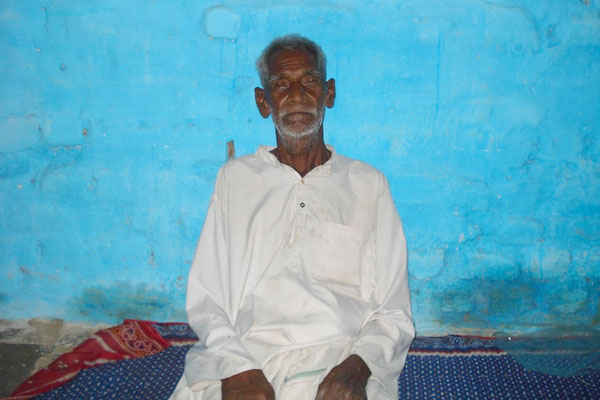
Narsinghbhai and Soniben are adivasi residents of village Kothi, one of the six villages whose lands were acquired for the project colony, the Kevadia Colony, when the foundation stone of the Sardar Sarovar Project (SSP) was laid in 1961. Large godowns, store houses, parking places, workers’ residential areas, officers’ quarters and related infrastructure was built on the lands of the adivasis who were till then living a sustainable and peaceful life on the banks of the river Narmada. The coming of the dam and its related infrastructure changed their lives beyond comprehension. Her interview throws light on how losing land to a mega-dam project colony results not just in the loss of livelihood but also a loss of dignity and the very way of life the adivasis of the now Narmada district of Gujarat knew and lived. The adivasis of these six villages continue to live a life of great social, cultural and economic deprivation. Moreover, after the completion of the SSP dam, their lands which were acquired for the purpose of SSP infrastructure are now being diverted to cater to tourism related to the Statue of Unity , the world’s tallest statue built at Kevadia Colony.
This interview explains how the adivasis of the six villages were dispossessed of their lands and livelihood, how their drinking water sources were contaminated with the discharge of the sewer waters of the project colony, how they fought it and what their life has been since their dispossession.
For the history of how adivasi/ tribal community of six villages, namely Gora, Waghadia, Kevadia, Kothi, Navagam and Limdi have been deprived of their lands and livelihood for the construction of Kevadia colony, now named Ekta Nagar, do also listen to the interviews of Dalsukhbhai Tadvi, Kapilaben Tadvi, Muljibhai Tadvi. Also listen to Prabhubhai Tadvi who talks of how their lands and villages were, before the coming of the Sardar Sarovar Dam and before their lands were acquired for the project colony. These oral histories have been shared on this website.
Interview duration: 0:49:47
Language: Gujarati, Subtitles in English
The Late Gangaram (baba) Yadav
Submergence Village Chotabadada, Madhya Pradesh
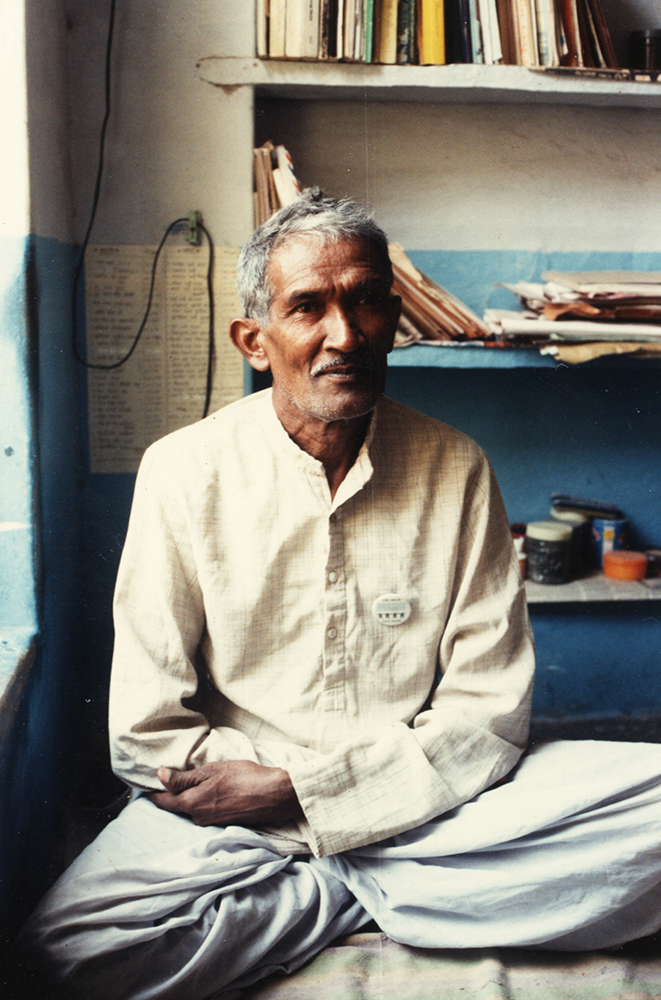
Gangarambaba had participated actively in the Nimad Bachao Andolan in Madhya Pradesh, a movement for the reduction of the height of the Sardar Sarovar Dam, then called the Navagam Dam, in the late 1970s. The Nimad Bachao Andolan emerged in Madhya Pradesh soon after the declaration of the Narmada Water Dispute Tribunal award in 1979. Gangarambaba was also one of the key members of the Narmada Bachao Andolan (NBA). He managed the main centre and office of the NBA named Narmadai in the village Manibeli, a village that was once the bastion of the NBA in the 1990s. The struggle against displacement carried out by the NBA at Manibeli, the first village in Maharashtra to be submerged by the Sardar Sarovar dam was unique in itself. Gangarambaba was stationed at Manibeli for several years during those trying times and he describes the struggle from his vantage point as an active participant. This interview helps us understand the impact of the failure of the Nimad Bachao Andolan in the late seventies, the early years of the NBA and the struggles around village Manibeli in those early days.
Interview duration: 1:14:00
Language: Hindi, Subtitles in English
The Late Jyoti (bhai) Desai
1926 to 27-Feb-2024
Renowned Educationist and Eminent Gandhian, Gujarat
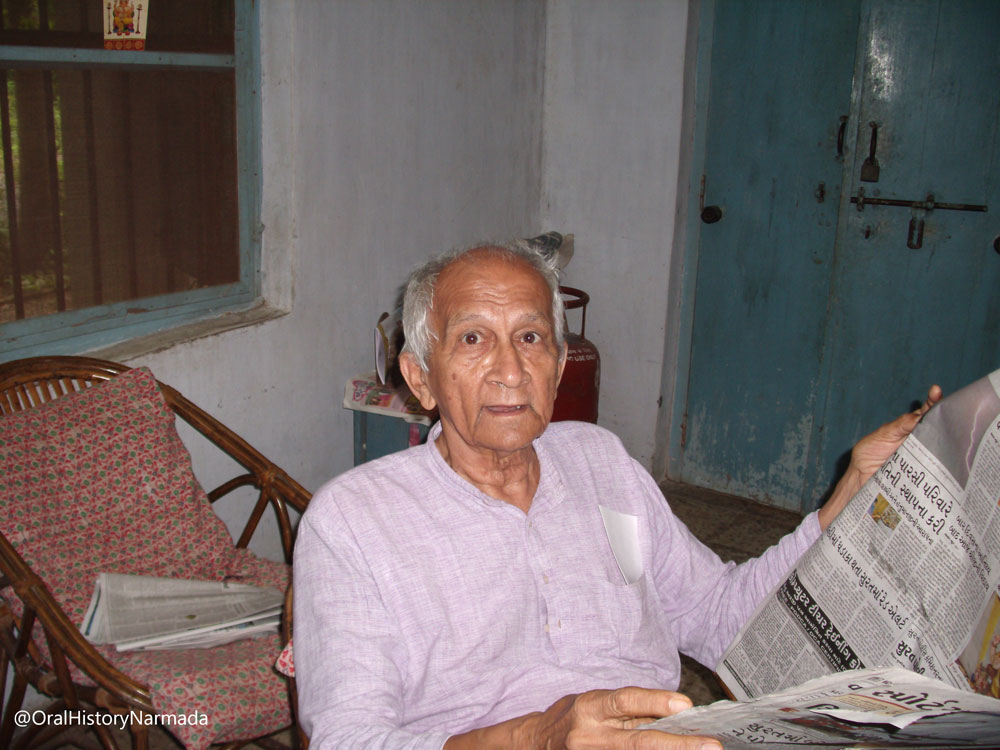
Jyotibhai Desai’s contribution to the civil society and public life of India is extraordinary and should be a subject of study for all those concerned about improving the lives of the marginalised sections of our society. A freedom fighter as a youth, he had seen Gandhiji with his own eyes. He was involved both in the struggles as well as constructive work in India’s post-independence period. An eminent educationist, he worked during his young days at the esteemed Gandhian University, Lok Bharti, Sanosara, near Bhavnagar in Gujarat. He later joined the Late Jugatram Dave, a renowned educationist at the Gandhi Vidyapith at Vedchi in South Gujarat. Jyotibhai provided valuable insights on educational policies and was on several committees and boards including the Gujarat State Secondary School Education Board and the Central Advisory Board of Education. He worked along with Jayprakash Narayan on diverse issues. The first half of Jyotibhai’s interview throws light on the independence struggle, the events he was involved in and the kind of work he got involved in after India became independent. The latter half of his interview is about his involvement with the Narmada Bachao Andolan (NBA). Jyotibhai’s interview is particularly important since he was a Gandhian and had also been active in the struggle for Independence as well as in many struggles of India’s post-independence. He brings his experience and his deep insight and thoughts on each of the strategies and helps us understanding the many strategies of the NBA, throws light on how to build a people’s movement and the importance of collective resistance and decision making processes in a movement. He also was part of the fund raising committee of the NBA and talks about the issue of funds and people’s movements.
Interview duration: 02:44:00
Language: Gujarati, Subtitles in English
The Late Sadashiv Upadyaya (Patwari Baba)
Submergence village Chikhalda, Madhya Pradesh (M.P.)
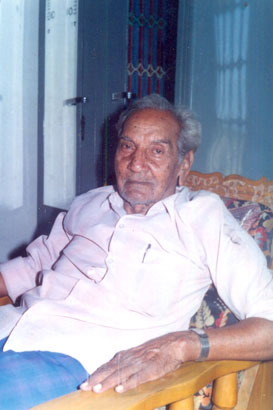
Patwari baba, born in 1916, was for several years the sarpanch (head man) of the submergence village Chikhalda in Madhya Pradesh. With his vast experience of having lived on the banks of the river Narmada, his interview is important to understand the history of the river and how it has changed from the time India was under the British rule and governed by the princely states of Holkar and Badwani to post India’s independence. He speaks of the life in the princely states, the 1979 floods in the Narmada, the coming of the Sardar Sarovar (SSP) and declaration of the Naramda Water Dispute Tribunal Award (NWDT). He talks of how the local people challenged the NWDT in the Supreme Court of India, the coming of Medha Patkar to the Narmada Valley and her role in the rise of the Narmada Bachao Andolan (NBA). Patwari baba also recalls how a good collector like Harsh Mander did not use force against the NBA, his own role in building the NBA and his role particularly during the time the movement faced excessive repression. This interview is particularly important to understand how legal work is vital in a movement and how senior leaders of the movement like him worked every single day to help release of arrested activists of the NBA.
Interview duration: 00:28:48
Language: Hindi, Subtitles in English
Summary of the Early History and Evolution of the Narmada Struggle
One of the earliest instances of resistance by the people of the Narmada valley against the displacement induced by the Sardar Sarovar Project (SSP) was way back in the year 1961 when the foundation stone of the Navagam dam was laid by Pandit Jawaharlal Nehru. It was then that the lands of six adivasi villages were acquired for the construction of a helipad and the project colony (Kevadia colony) which the adivasi residents resisted.
Later, there arose a dispute over the height of the dam and the sharing of Narmada waters among the riparian states of Madhya Pradesh (M.P.), Gujarat and Maharashtra, and the Narmada Water Dispute Tribunal (NWDT) was set up in 1969 to resolve the dispute. When the NWDT gave its award ten years later in 1979, a spontaneous powerful movement emerged in M.P. called the Nimad Bachao Andolan which demanded a reduction in the height of the SSP. This movement, though fierce, was short lived. Around this time, some veteran Gandhians and local leaders formed the Narmada Ghati Navnirman Samiti (NGNS) in M.P. which questioned large dams being built on the Narmada, and mobilised people around the issue in M.P. NGNS was one of the first organisations in M.P. that began comprehensively questioning the building of dams on the Narmada. While these mobilisations were mainly taking place in the Nimad area (the plains) of M.P., in the tribal villages of M.P. in Alirajpur tehsil, the Khedut Mazdoor Chetna Sangathan, (KMCS) was actively working on issues of tribals and forest rights. Subsequently, it was KMCS which took up the issue of displacement of tribal people on the banks of the Narmada in the submergence villages of Alirajpur.
By the early eighties people in Gujarat and Maharashtra had also begun raising concerns regarding displacement and rehabilitation around SSP. This included groups and organisations like Arch Vahini, Rajpipla Social Service Society (RSSS), Multiple Action Research Group (MARG), etc. Later, organisations like the Centre for Knowledge and Social Action (SETU) also got actively involved in the issue of SSP and displacement.
It was also in the early eighties that members of Kalpavriksh and the Hindu College Nature Club undertook a yatra along the river to study the environment impacts of large dams in the Narmada Valley.
All these groups played different, important and catalytic roles during this period in the Narmada valley, in raising issues around the SSP and in the initiation of people’s struggles around the project.
The organisation of the affected people of Maharashtra, the Narmada Dharangrasth Samiti (NDS), was constituted in mid- eighties. It was only in the mid-eighties, that a more organised, coordinated and systematic organisation of the people of the affected villages came into being, coalescing around the NDS, NGNS and KMCS, this organisation spread across the submergence and affected villages in the three states.
This united organisation of the affected people of the three states, their extensive support network and their struggle came to be popularly known as the Narmada Bachao Andolan (NBA) since the late eighties.
Narmada Bachao Andolan (NBA), a powerful people’s resistance movement against the Sardar Sarovar Project has been going on for over three decades now.